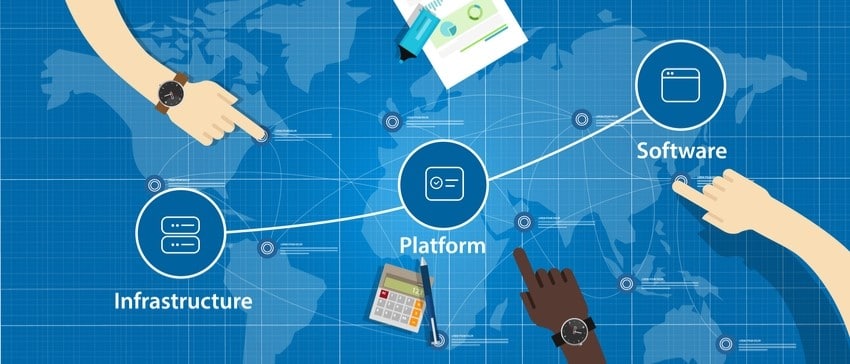There is a tad bit of skepticism about the amalgamation of procurement and supply chain management.
You see, the hesitation comes over how procurement and supply chains can merge.
Since the onset of the pandemic, Chief Supply Chain Officers (CSCOs) and Chief Procurement Officers (CPOs) have been battling with questions such as:
Can procurement and supply chains even come together? Or are they destined to be forever disenfranchised and at odds with each other? Is it at all possible to unite them?
The answer?
Yes.
Procurement and supply chain management are indeed better and smarter together. These functions fit and work extremely well as a pair – especially in the current climate.
However, before exploring why this is the case – why procurement and supply chain are smarter together, let’s first understand the problem we’re trying to tackle in uniting these two functions.
The Problem: Growing Disruption in Procurement and Supply Chains
There have been several shocks and disruptions in procurement and supply chains in recent years. But none on the scale manifested by COVID-19.
The coronavirus pandemic simply served to alert supply chain executives on their readiness (or lack thereof) to address and handle such events.
In fact, drawing from a survey of 200 senior-level supply chain execs conducted by Ernst & Young in late 2020, we can see that 72% reported the very negative effect COVID had on their company. Shockingly, only 2% of interviewed CSCOs said they were “fully prepared for the pandemic.”
What does this tell us?
Few CSCOs and CPOs have adequate business continuity and disaster recovery plans in place to handle large-scale disruptions in operations.
One thing is sure, the problem of disruptions will not go away, in fact, it will continue to increase.
From transportation failures to natural disasters, price increases, and cyberattacks, enterprises that desire to prosper must learn to amalgamate procurement and supply chain management.
This is the only way to be successful in both procurement and supply chain endeavors.
The Fact-of-the-Matter: Procurement and Supply Chain Management Are Better Together
When trying to understand the dynamics of procurement and supply chain management, we must consider these functions as they were before the pandemic and what they need to look like post-pandemic.
Pre-COVID, at least 70% of enterprise spend was tied up in supply chain and procurement campaigns. The top priority in most organizations was keeping cost and efficiency at optimal levels.
Today, however, business continuity and resilience are the major pain points and areas of concern for most CSCOs and CPOs.
The ability to recover quickly and bounce back from a difficult situation while mitigating shock across the company is now seen as a highly desirable quality.
Where before CSCOs and CPOs worked apart, today, their expertise is required as a unifying force to confront disruptions head-on.
These two offices find their operations colliding, aligning even, as opportunities for collaborations open up.
The Differences Between Procurement and Supply Chain
Yes, procurement and supply chain are two different processes, each with a set of distinguishing features. And while they are indeed different, they have become as it were, two sides of the same coin.
To easily see their different roles let us consider their definitions as presented by the Chartered Institute of Procurement and Supply (CIPS):
Procurement: The act of obtaining something, whether tangible or intangible, such as a product or service.
Supply Chain: A network of individuals, organizations, technology, activities, and resources working together to make sure goods or services reach the end-user.
How then do these two converge?
Without a supply chain, it is difficult to source goods. Procurement becomes an incredibly hard task. And conversely, supply chains exist because people and organizations need the goods and services being provided by the supply network.
How Procurement and Supply Chain Management Come Together
The demands necessitated by procurement are fulfilled by the supply chain. How does this look practically?
Procurement demands a relationship. Supply chains are relational.
There is no such thing as procurement without relying on a supply chain. You need a network of individuals constituting the vendor supplier relationship, robust supplier management software, and various other resources.
The notion that procurement is relational is a truism of the industry. It’s always about the relationships built, established, and nurtured.
Procurement demands strategy. Supply chains are all about being tactical.
Another aspect of procurement is the need for efficient strategies.
No one can dispute the fact that one of the most fundamental features of procurement is strategy – robust, innovative, clear-cut strategies that mitigate spend and promote lean operations.
And how exactly does one procure like this? By relying on tactical and strategic supply chains of course.
Conclusion
In a post-COVID era, the businesses that will thrive are those that recognize the importance of amalgamated procurement and supply chain management.
Today’s, CSCOs and CPOs must join forces in order to meet the needs and come up with effective solutions.
And part of that success will be the result of relying on cutting-edge procurement software such as that provided by ProcurePort.
ProcurePort prides itself as one of the leading providers of the best supplier management software on the market and is trusted by enterprises and organizations such as UNOPS, HUD.GOV, and conEdison.
If you would like to discuss supplier management software with a consultant, or to schedule a demo, contact us today.










